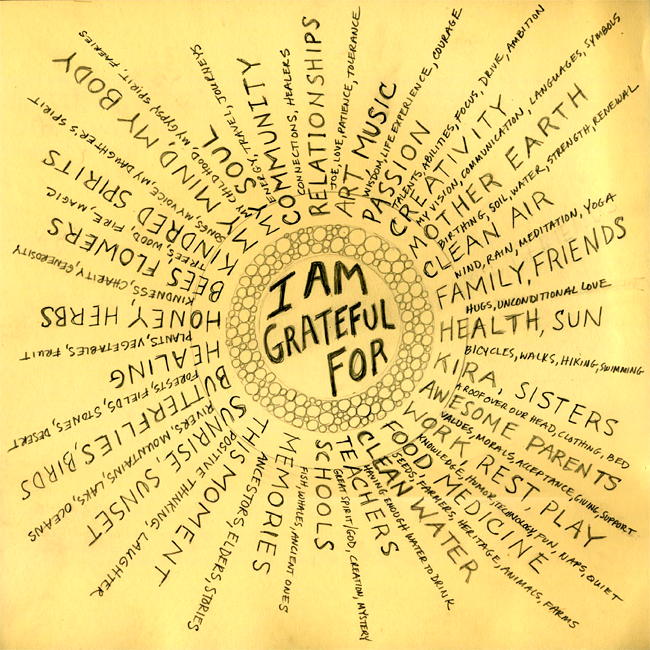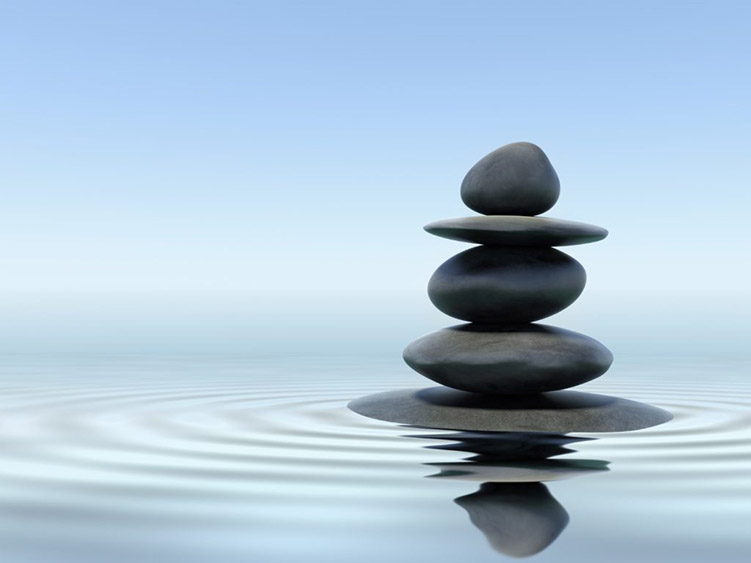Key Takeaways
- Living in the moment reduces stress by focusing on present experiences rather than future worries.
- Mindfulness techniques, such as deep breathing and meditation, improve focus and productivity.
- Being present enhances relationships by allowing you to fully engage with loved ones.
- Practicing gratitude daily boosts emotional health and well-being.
- Limiting technology use helps you connect more deeply with your surroundings.
5 Immediate Benefits of Living in the Moment
When we talk about living in the moment, we’re referring to the practice of being fully engaged in the present, without distractions from the past or future. This approach has numerous benefits, which I’ll walk you through, beginning with stress reduction.

“Mindfulness-Based Stress Reduction: The …” from positivepsychology.com and used with no modifications.
Stress Reduction
Stress often stems from worrying about the future or dwelling on the past. By focusing on the present, you can significantly reduce these stressors. Let’s consider a simple exercise to understand this better:
“Take a moment to sit quietly and focus on your breath. Notice the sensation of air entering and leaving your body. By doing this, you’re practicing mindfulness, which helps ground you in the present.”
This technique is powerful because it directs your attention away from stress-inducing thoughts and onto something as simple as breathing.
Research has shown that regular mindfulness practice can lower cortisol levels, the hormone responsible for stress. Therefore, integrating mindfulness into your daily routine can create a more relaxed and stress-free life. To further enhance your well-being, consider exploring optimism techniques that can complement your mindfulness practice.
Improved Focus and Productivity
Another benefit of living in the moment is improved focus. When your mind is cluttered with multiple thoughts, it becomes difficult to concentrate on a single task. However, mindfulness teaches us to focus on one thing at a time.

“The Power of Meditation: Finding Peace …” from www.integrative-psych.org and used with no modifications.
Enhanced Relationships
Living in the moment doesn’t just benefit you; it also enhances your relationships. By being present, you can give your full attention to those around you, showing them that you value their presence. This deepens connections and improves communication.
Think about the last time you had a conversation with someone who was distracted. How did it feel? Now, imagine being fully present, listening intently, and engaging in the discussion. The difference is profound, and it all starts with mindfulness.
Boosted Emotional Health
Emotional health is closely linked to mindfulness. By being present, you can better understand and manage your emotions. This awareness allows you to respond to situations thoughtfully rather than react impulsively.
Greater Life Satisfaction
Finally, living in the moment increases overall life satisfaction. When you appreciate each moment, life becomes more fulfilling. You’re not constantly seeking happiness in the future; instead, you find joy in the here and now.
Imagine enjoying a meal with friends. Instead of thinking about tomorrow’s to-do list, you savor each bite, laugh at jokes, and enjoy the company. This is what it means to live in the moment.
Practical Strategies to Live in the Present
Now that we’ve explored the benefits, let’s dive into practical strategies to help you live in the moment. These techniques are simple, yet they can have a profound impact on your life. For instance, learning how to break bad habits can significantly enhance your ability to stay present and focused.
Mindfulness Techniques
Mindfulness techniques are at the core of living in the moment. They help you become more aware of your surroundings and your internal state. Here are a few techniques you can try:
- Deep Breathing: Focus on your breath for a few minutes each day. This simple practice can anchor you in the present.
- Body Scans: Pay attention to different parts of your body, noticing any sensations or tension.
- Mindful Walking: Walk slowly and notice each step, the ground beneath your feet, and the rhythm of your breath.
- Guided Meditation: Use apps or recordings to guide you through meditation practices.
These practices help you cultivate mindfulness, making it easier to live in the moment.

“Practicing Gratitude Daily …” from getradiantlife.com and used with no modifications.
Daily Gratitude Practices
Gratitude is a powerful tool for living in the present. By focusing on what you’re thankful for, you shift your attention from what’s lacking to what you have. Here’s how you can practice gratitude daily:
“Every morning, write down three things you’re grateful for. They can be simple, like a warm cup of tea or a kind word from a friend.”
This practice trains your mind to focus on the positive aspects of life, enhancing your overall well-being.
Connecting Deeply with Surroundings
One of the most effective ways to live in the moment is by connecting deeply with your surroundings. This means being fully aware of the environment around you, whether you’re at home, in nature, or at work. By tuning into the sights, sounds, and smells around you, you can ground yourself in the present.
For example, when you walk outside, notice the rustling leaves, the warmth of the sun on your skin, or the sound of birds chirping. These sensory experiences can anchor you in the moment, helping you to appreciate the beauty of the world around you.
Mindfulness Techniques Explained
Mindfulness is a practice that involves paying full attention to the present moment without judgment. It requires focus and awareness, which can be cultivated through various techniques. Let’s explore some of these techniques in more detail.
Mindfulness isn’t just a practice; it’s a way of life. By incorporating these techniques into your daily routine, you can develop a more mindful approach to life, enhancing your ability to live in the moment.
Breathing Exercises
Breathing exercises are a foundational mindfulness technique. They help calm the mind and bring your attention to the present. Here’s a simple exercise to try:
- Sit comfortably with your back straight and your hands resting on your lap.
- Close your eyes and take a deep breath in through your nose, counting to four.
- Hold your breath for a count of four.
- Exhale slowly through your mouth for a count of four.
- Repeat this cycle for a few minutes, focusing solely on your breath.
This exercise helps you center your mind and reduce stress, making it easier to stay present. For more techniques, explore these optimism techniques that can enhance your well-being.

“Cultivation of optimism encourages us …” from www.tomorrowsuccess.com and used with no modifications.
Body Scans
A body scan is a mindfulness practice that involves paying attention to different parts of your body. It helps you become more aware of physical sensations and tension. To perform a body scan, follow these steps:
- Lie down in a comfortable position and close your eyes.
- Start by focusing on your toes, noticing any sensations or tension.
- Slowly move your attention up your body, from your feet to your head.
- Spend a few moments on each area, observing without judgment.
This practice helps you connect with your body and relax, promoting a sense of presence and well-being.
Mindful Walking
Mindful walking is a simple yet powerful way to practice mindfulness. It involves walking slowly and deliberately, paying attention to each step. Here’s how to do it:
- Find a quiet place where you can walk undisturbed.
- Begin walking slowly, focusing on the sensation of your feet touching the ground.
- Notice the movement of your legs and the rhythm of your breath.
- Stay present by bringing your attention back to your body whenever your mind wanders.
This practice not only enhances your awareness but also provides a sense of peace and relaxation.
Guided Meditation
Guided meditation is an excellent way to cultivate mindfulness, especially if you’re new to the practice. It involves listening to a recorded meditation that guides you through the process. Here’s why it’s beneficial:
Guided meditations can help you focus your mind, relax your body, and develop a deeper understanding of mindfulness. Many apps and online resources offer guided meditations for various purposes, such as stress relief, relaxation, and sleep.
By incorporating guided meditation into your routine, you can enhance your ability to live in the moment and improve your overall well-being.
Daily Habits to Cultivate Mindfulness
To make mindfulness a natural part of your life, it’s essential to develop daily habits that support this practice. These habits can help you stay present and mindful throughout the day, improving your overall quality of life.
Morning Mindfulness Routine
Starting your day with mindfulness sets a positive tone for the rest of the day. Here’s a simple morning routine to try:
- Upon waking, take a few deep breaths and express gratitude for the new day.
- Spend a few minutes in meditation, focusing on your breath or a positive affirmation.
- Engage in gentle stretching or yoga to awaken your body.
- Set an intention for the day, focusing on being present and mindful.
This routine helps you start your day with clarity and purpose, setting the stage for a mindful day.

“Healthy Food …” from www.morelandobgyn.com and used with no modifications.
Mindful Eating Practices
Mindful eating involves paying full attention to the experience of eating, savoring each bite, and being aware of hunger and fullness cues. Here’s how to practice mindful eating:
- Before eating, take a moment to appreciate the food in front of you.
- Eat slowly, savoring each bite and noticing the flavors and textures.
- Pay attention to your body’s hunger and fullness signals.
- Avoid distractions, such as TV or smartphones, while eating.
This practice enhances your enjoyment of food and helps you develop a healthier relationship with eating.
Evening Reflection Techniques
Ending your day with reflection helps you process the events of the day and prepare for restful sleep. Here’s a simple evening routine to try:
- Spend a few minutes journaling about your day, noting any moments of mindfulness or gratitude.
- Practice a short meditation to calm your mind and body.
- Reflect on what went well during the day and any lessons learned.
- Set an intention for the next day, focusing on areas for growth or improvement.
This routine helps you end your day with a sense of peace and fulfillment, promoting restful sleep and a positive mindset for the next day.
Potential Challenges and Solutions
As beneficial as mindfulness is, it’s not always easy to maintain. Various challenges can arise, making it difficult to stay present. However, with the right strategies, these obstacles can be overcome, allowing you to live a more mindful life. For example, learning how to break bad habits can be an effective way to improve mindfulness.
One common challenge is the constant barrage of distractions we face daily. Whether it’s technology, noise, or our own thoughts, distractions can pull us away from the present moment. Fortunately, there are solutions to help manage these interruptions, such as understanding the flow state to enhance focus and productivity.
“Consider setting specific times to check your phone or social media, rather than constantly being connected. This simple boundary can significantly reduce distractions.”
By implementing boundaries and practicing mindfulness techniques, you can minimize distractions and enhance your ability to live in the moment.
Overcoming Distraction
Distractions are a major barrier to mindfulness. They can take many forms, from digital devices to intrusive thoughts. To overcome distractions, it’s important to create an environment conducive to mindfulness.
Start by identifying the sources of distraction in your life. Are they external, like noise or technology, or internal, like stress or anxiety? Once you’ve identified them, you can take steps to address them.
- Set boundaries with technology by designating tech-free times or zones.
- Use noise-canceling headphones or white noise machines to block out external noise.
- Practice mindfulness techniques to calm your mind and reduce internal distractions.
- Establish a routine that includes regular breaks to refresh your focus.
By taking these steps, you can create an environment that supports mindfulness, allowing you to stay present and focused.

“A Comprehensive Guide to Stress Management” from iimtu.edu.in and used with no modifications.
Managing Stress and Anxiety
- Practice deep breathing exercises to calm your nervous system.
- Engage in regular physical activity to release built-up tension.
- Use mindfulness techniques, like meditation or yoga, to manage stress levels.
- Seek support from friends, family, or professionals when needed.
Stress and anxiety are natural parts of life, but they don’t have to control you. By incorporating these practices into your routine, you can manage stress more effectively and maintain a sense of calm.
Most importantly, remember that mindfulness is a journey, not a destination. It’s okay to experience setbacks or challenges along the way. What’s important is your commitment to the practice and your willingness to grow and learn.
Breaking Habits That Pull You Away from the Moment
Some habits, like multitasking or constantly checking your phone, can pull you away from the present moment. Breaking these habits requires awareness and intentional action. Start by identifying the habits that detract from your mindfulness and explore proven strategies to break bad habits and create a plan to address them.
For example, if you find yourself multitasking often, try focusing on one task at a time. Use timers or reminders to help you stay on track. Over time, these small changes can lead to significant improvements in your ability to live in the moment.

“Mindfulness Part of Your Mental Health …” from news.stonybrook.edu and used with no modifications.
Frequently Asked Questions
Mindfulness can be a complex topic, and you may have questions about how to integrate it into your life. Here are some common questions and their answers to help you on your mindfulness journey.
Why is it difficult to stay present?
Staying present can be challenging due to various factors, such as distractions, stress, and ingrained habits. Our minds naturally wander, often focusing on past regrets or future worries, making it difficult to remain in the present moment.
To combat this, practice mindfulness techniques regularly and create an environment that supports presence. Over time, you’ll find it easier to stay present and focused.
- Recognize when your mind starts to wander and gently bring it back to the present.
- Use mindfulness practices, like meditation or breathing exercises, to strengthen your focus.
- Set boundaries with technology to minimize distractions.
By taking these steps, you can train your mind to stay present and engaged, even in challenging situations. Additionally, exploring optimism techniques can further enhance your ability to remain focused and positive.
Can mindfulness improve mental health?
Yes, mindfulness has been shown to have numerous benefits for mental health. It can reduce symptoms of anxiety and depression, improve emotional regulation, and increase overall well-being. By practicing mindfulness regularly, you can enhance your mental health and resilience.
Research supports the mental health benefits of mindfulness. For example, a study published in the journal “Psychological Science” found that mindfulness meditation can reduce symptoms of anxiety and depression in just a few weeks.
“Mindfulness is not about escaping reality; it’s about facing it with clarity and calmness. By doing so, we can better manage our mental health and well-being.”
How can children practice living in the moment?
Children can benefit from mindfulness just as much as adults. Teaching children to live in the moment helps them develop focus, emotional regulation, and resilience. Here are some ways to introduce mindfulness to children:
- Encourage them to take deep breaths when they feel overwhelmed or upset.
- Practice mindful listening by having them focus on the sounds around them.
- Engage in mindful activities, like coloring or nature walks, to promote presence.
- Model mindfulness by practicing it yourself and sharing your experiences with them.
By incorporating these practices into their daily routine, children can develop mindfulness skills that will benefit them throughout their lives.
What are quick techniques for immediate presence?
Sometimes, you need to ground yourself in the present moment quickly. Here are a few techniques that can help you do just that:
First, try the “5-4-3-2-1” grounding exercise. Identify five things you can see, four things you can touch, three things you can hear, two things you can smell, and one thing you can taste. This exercise engages your senses and brings you back to the present.
Another technique is to take a few deep breaths, focusing solely on the sensation of the air entering and leaving your body. This simple practice can quickly calm your mind and anchor you in the moment.
How does mindfulness impact physical health?
Mindfulness doesn’t just benefit your mental health; it can also have positive effects on your physical health. Regular mindfulness practice has been linked to lower blood pressure, improved sleep, and reduced inflammation.
Additionally, mindfulness can enhance your body’s response to stress, leading to a stronger immune system and better overall health. By practicing mindfulness, you can support both your mental and physical well-being.










Leave a Reply